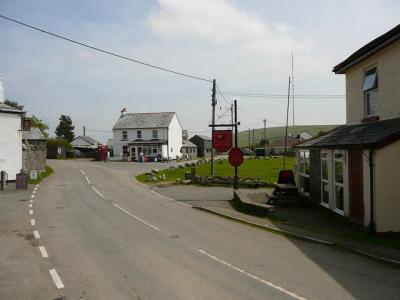


Desolate village high on the moor
Web: www.minions-cornwall.co.uk
Web: www.visitcornwall.com/destinations/minions
Web: www.facebook.com/MinionsVillageCornwall
Minions lays claim to being the highest village in Cornwall, with the highest inn - at more than 1,000 feet. It is situated on the eastern flank of Caradon Hill approximately five miles north of Liskeard. The unusual name for this village is said to originate in Minions mound, a huge mass of earth at the west end of the village, purported to be the grave of King Minion, a Celtic 'King', of whom nothing is known but his name. But the village has also been known as Cheesewring Railway.
Minions is increasing in popularity with summer visitors because of the great number of interesting features in the immediate area - in addition to its situation, surrounded by moorland on all sides. The village is dominated by Caradon Hill, standing at 1,217 feet high, on which there is a TV transmission mast on the summit. As a result, there is a road leading up to the summit from Minions. On the western flank of the hill, a quarry recently started up again, cutting granite boulders.
At the edge of the village are The Hurlers, Bronze Age stone circles dating from 1,500 BC. Here too is Rillaton Barrow from which the Rillaton Cup was taken in 1837, a copy of which can be seen in the Royal Cornwall Museum. A few hundred yards away is the Longstone, standing alone on the moor. The crosses incised on either side of the Longstone were most probably carved in the Middle Ages, although one school of thought would date them from the Saintly period of the Dark Ages.
Minions is the setting of E. V. Thompson's historical novel Chase the Wind, a century ago the area would have been teeming with miners and quarrymen seeking granite, copper and lead, but today the nearby Cheesewring Quarry on Stowe's Hill, is deserted except for rock climbers, its granite cliff rising to the Cheesewring, a well-known group of balancing rocks. Beyond the Cheesewring - so named from its similarity to the shape left by a cloth-enclosed cheese when the whey has been wrung from it - is an Iron Age hill fort.
Just below the Cheesewring is a cave used by Daniel Gumb, a gifted 18th century thinker and stone-cutter. There were more rooms in the caves that he and his large family lived from 1735-1776. His penchant for mathematics can be seen from the fact that one of Euclid's problems is carved on the roof the cave. The family were buried at Linkinhorne churchyard.
The products of the mines and quarries were taken from here to Liskeard and then onto Looe for shipping, on the Liskeard and Caradon Railway built around 1844 and closed in 1916.
One of the last mines to close was the Prince of Wales Shaft, which was only opened in 1909 by Prince and Princess of Wales, lying a short distance along the road to Henwood, and closing around 1914.
All around the village are ruined engine houses and wired-off mine shafts, reminders that this village was at the heart of the copper mining boom of the 1830's. From Minions it is possible to follow the granite sleepers of the old mineral railway around Stowe's Hill and onto the lonely wastes of the heart of the moor near to Kilmar Tor.
Filming for 'Miss Peregrine's Home for Peculiar Children' took place in 2015.
The Cheesewring Hotel is completely burnt down on the 24th December 2021 during a large fire at the property.
Daniel Gumb (1703-1776), Grew up and worked at the Cheesewring Quarry, where he built himself a stone 'cave' near the bottom of the quarry. You can still see the place though much reduced from the original three room thirty foot long 'house'. In this house he and his wife raised nine children, he carved his name and date 1735 into a stone, and because he was interested in astronomy.
Bodmin Moor Minions Heritage Centre St. Cleer Ancient Sites in Cornwall North Hill
The Copper Trail The Caradon Trail Linkinhorne